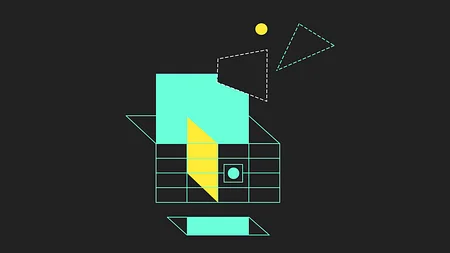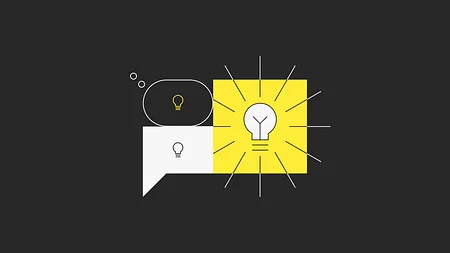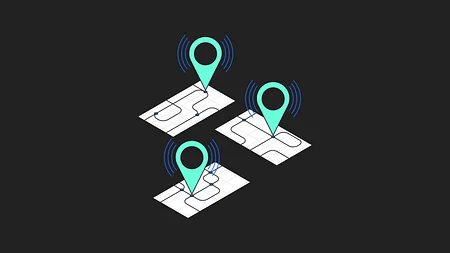Banking: Participation is no longer mandatory
‘Digital’ is not technology, it is not an app. It is the human experience re-imagined in a way that removes entire steps of the value chain.
When banks look at digital disruption, they tend to focus on the technology because there is a box named technology in their head, and a floor named technology in their building, and if you give things a shape that you recognize, they become easier to handle.
That is dangerous because it fails to acknowledge the scale of the challenge for banks set up in an analogue world to maximise efficiency around a value chain that is increasingly contested, based on technology that is increasingly obsolete. The advent of the digital era removes friction, the in-between steps and processes that existed because there was no better way.
So the hardest question posed by the advent of the digital era is ‘how much of your organisation can you afford to take into the future’? Not an easy question to stomach. Not an easy question to answer.
Just look at the Yellow Pages. The idea that, to make a restaurant reservation, we would leaf through a physical book delivered periodically through the post and kept under a fixed, designated telephone spot in the household is fraught with quaint anachronism.
The point was to go for dinner.
The digitisation of the experience didn’t recreate the process, it solved for the need: relevance. People went from searching the phone number and calling the restaurant from a different device to directly dialling it from the same device, to making a reservation and issuing a calendar invite to all diners, without speaking with a single human.
That is seamless. But not the sort of seamless that you could or would imagine if you worked for the Yellow Pages. The result was inevitable. The Yellow Pages digitised itself and failed because it didn’t appreciate that it was an enabler in a process fit for a different era.
Increasingly, people like to participate as little as possible. The Uber model capitalises on this. You want to go somewhere. There are several steps involved in getting you from A to B, but you don’t need to participate in them all and you don’t want to be exposed the mechanics of it. Geolocation means you don’t need to know where you are. Smart searches and map integrations mean you only need to vaguely know where you are going and since the payment method is pre-agreed and seamless, all you need to do is get in the car and remember where the receipts are stored on the app. You still pay, but it's a non-participatory experience. All you actually do is get from A to B. If this logic is applied to banking we soon realise that, measured against a value assessment grid that separates the activity the customer wishes to perform from the enabling or unavoidable steps, banking is a ‘so-that’ business. It is what we do in order to be able to do something else. You don't do it for fun, for the experience or as a hobby. You do it because you need credit, because you have investable assets, because you want to buy a home. Whether you are buying an ice cream or a pension, money is the medium (be it a payment method, credit etc) and the banking service is a bridge to something else, never the endgame. That is not necessarily bad news for the bank, if you translate the relationship of trust you have with your financial services provider to a trusted set of parameters that you pre-agree to and entrust them to, it creates new possibilities. Provided you are not trying to measure those in terms of touchpoints and interactions like you used to back in the day. The temptation is strong. The fear that if the client doesn’t see us and talk to us regularly we may ‘lose’ them is equally powerful. And yet it’s a losing battle, often a good experience is a reduced experience, an experience that takes the user to the ‘so that’ with as many of the in between steps removed as possible, either by leveraging technology to completely remove them or by making them invisible. This setup can still be profitable. It is just less visible. If I drive my car across international borders, pre-bought micro-insurance can kick in because my car's GPS and my GPS have alerted my insurer that I've left the country. And if I return in 12 hours, I can be insured for 12 hours. And I just bought a product I wouldn’t have otherwise bothered with, because it was so easy.
None of this is science fiction. The technology exists. What we don't have, quite yet, is the organisational alignment to allow for people to wrap jobs and institutional awareness around ‘the art of the recently possible’. It's a transition but it is accelerating, especially as challengers are bringing a variety of easier, cheaper, personalised and connected experiences for the consumer. Irrespective of the the challengers’ long term financial viability, their offerings have brought the consumer closer to whatever it is they are trying to do and the expectation that this is how things will be from now on cannot be underestimated. Incumbents still have time to determine how to tackle this future but they no longer get to make a call on whether they want to play or not. It is here, it is real, it is accelerating by the minute. Attempts are made across the industry to hold onto old ways of doing things. Although understandable it is both futile and dangerous. Because while trying to figure out how to get as much as possible out of digitisation by doing as little of it as possible, time and money is wasted. Time and money that should be spent answering the hard question of ‘how much of your organisation are you going to take into the future’. Because although it is true that money can still be made, value can still be generated and business viability is there for the taking, it is also true that banking’s digital future is populated with fewer and smaller organisations, since the digital removal of unnecessary processing will inevitably turn inwards helping leaner players to emerge. So as we imagine what seamless and non-participatory looks like, we are faced with the elimination of quite a lot of what makes banks money today, quite a lot of what they spend long and busy days doing. The change won’t happen overnight and it will require new partnerships, new relationships and new ways of thinking. But it will come and those who spend time thinking about their desired future may be better placed to achieve it, with the right partnerships and ways of thinking in place before it’s too late. ‘Why do we exist?’ is an uncomfortable question to ask, but it is the only question worth spending time on. Otherwise the bank runs the real risk of not being a ‘so that’ business but becoming a ‘so what’ business as those around them realise the opportunities afforded by a seamless digital experience.
Seamless and Non Participatory
Increasingly, people like to participate as little as possible. The Uber model capitalises on this. You want to go somewhere. There are several steps involved in getting you from A to B, but you don’t need to participate in them all and you don’t want to be exposed the mechanics of it. Geolocation means you don’t need to know where you are. Smart searches and map integrations mean you only need to vaguely know where you are going and since the payment method is pre-agreed and seamless, all you need to do is get in the car and remember where the receipts are stored on the app. You still pay, but it's a non-participatory experience. All you actually do is get from A to B. If this logic is applied to banking we soon realise that, measured against a value assessment grid that separates the activity the customer wishes to perform from the enabling or unavoidable steps, banking is a ‘so-that’ business. It is what we do in order to be able to do something else. You don't do it for fun, for the experience or as a hobby. You do it because you need credit, because you have investable assets, because you want to buy a home. Whether you are buying an ice cream or a pension, money is the medium (be it a payment method, credit etc) and the banking service is a bridge to something else, never the endgame. That is not necessarily bad news for the bank, if you translate the relationship of trust you have with your financial services provider to a trusted set of parameters that you pre-agree to and entrust them to, it creates new possibilities. Provided you are not trying to measure those in terms of touchpoints and interactions like you used to back in the day. The temptation is strong. The fear that if the client doesn’t see us and talk to us regularly we may ‘lose’ them is equally powerful. And yet it’s a losing battle, often a good experience is a reduced experience, an experience that takes the user to the ‘so that’ with as many of the in between steps removed as possible, either by leveraging technology to completely remove them or by making them invisible. This setup can still be profitable. It is just less visible. If I drive my car across international borders, pre-bought micro-insurance can kick in because my car's GPS and my GPS have alerted my insurer that I've left the country. And if I return in 12 hours, I can be insured for 12 hours. And I just bought a product I wouldn’t have otherwise bothered with, because it was so easy.
‘The future’ is becoming ‘the present’
None of this is science fiction. The technology exists. What we don't have, quite yet, is the organisational alignment to allow for people to wrap jobs and institutional awareness around ‘the art of the recently possible’. It's a transition but it is accelerating, especially as challengers are bringing a variety of easier, cheaper, personalised and connected experiences for the consumer. Irrespective of the the challengers’ long term financial viability, their offerings have brought the consumer closer to whatever it is they are trying to do and the expectation that this is how things will be from now on cannot be underestimated. Incumbents still have time to determine how to tackle this future but they no longer get to make a call on whether they want to play or not. It is here, it is real, it is accelerating by the minute. Attempts are made across the industry to hold onto old ways of doing things. Although understandable it is both futile and dangerous. Because while trying to figure out how to get as much as possible out of digitisation by doing as little of it as possible, time and money is wasted. Time and money that should be spent answering the hard question of ‘how much of your organisation are you going to take into the future’. Because although it is true that money can still be made, value can still be generated and business viability is there for the taking, it is also true that banking’s digital future is populated with fewer and smaller organisations, since the digital removal of unnecessary processing will inevitably turn inwards helping leaner players to emerge. So as we imagine what seamless and non-participatory looks like, we are faced with the elimination of quite a lot of what makes banks money today, quite a lot of what they spend long and busy days doing. The change won’t happen overnight and it will require new partnerships, new relationships and new ways of thinking. But it will come and those who spend time thinking about their desired future may be better placed to achieve it, with the right partnerships and ways of thinking in place before it’s too late. ‘Why do we exist?’ is an uncomfortable question to ask, but it is the only question worth spending time on. Otherwise the bank runs the real risk of not being a ‘so that’ business but becoming a ‘so what’ business as those around them realise the opportunities afforded by a seamless digital experience.


